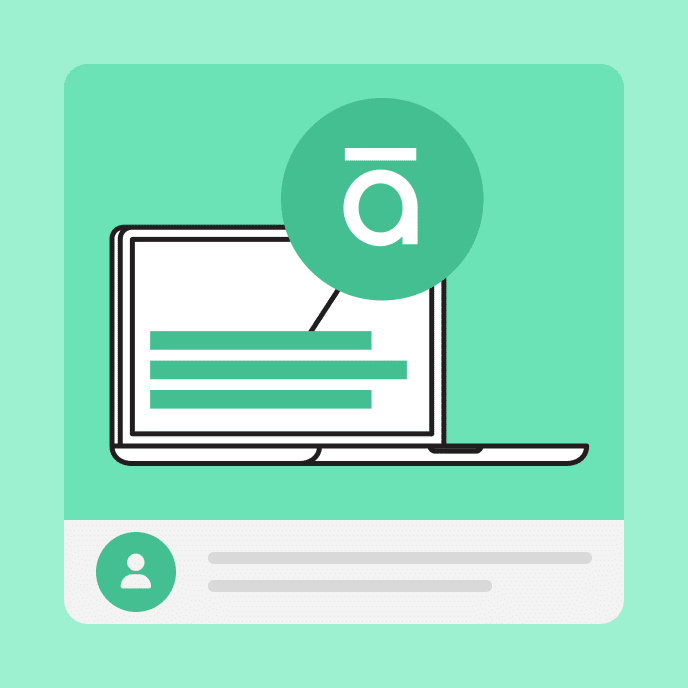How E-Learning Enhances Employee Retention
Learn how e-learning can boost employee retention through personalized, flexible, and continuous learning opportunities that foster loyalty and productivity.

In today’s competitive job market, employee retention is a critical challenge for businesses. High turnover rates can lead to increased costs, reduced productivity, and a negative impact on company culture.
One effective strategy to improve employee retention is leveraging e-learning to provide continuous learning and development opportunities for employees. Below, we’ll explore the role of e-learning on retention, as well as practical tips and insights for creating an engaging learning environment for your team.
Key Takeaways
How does e-learning boost employee retention?
With e-learning, you can easily deliver training at scale to boost your employee retention. Here’s how:
1. Flexibility
E-learning allows employees to access training materials across a variety of topics at their own pace and on their schedule. This flexibility is particularly beneficial for those with varying work hours or remote work arrangements, allowing them to make time for learning when it’s most convenient for them.
With multi-device-compatible courses, employees can learn on the go, making it easier to fit training into their busy lives. This access can lead to higher engagement and satisfaction because you are able to meet your employees where they are. Multi-device learning ensures that training is not confined to a desktop or a specific location, providing learning opportunities anytime and anywhere.
2. Personalized learning experiences
E-learning platforms can help you create customized training programs with content tailored to individual employee needs and career goals. Personalized learning paths ensure that employees receive relevant training for their unique role, making them feel valued while also providing upskilling opportunities that improve performance. For example, a manager might customize their direct report’s learning opportunities by recommending a course that aligns with their career aspirations, strengths, or areas for improvement.
Adaptive learning technologies also help personalize the e-learning experience by adjusting content based on the user’s performance. This helps ensure that employees are neither bored with repetitive content nor overwhelmed with topics that are too advanced. Adaptive learning systems provide challenges that match the learner’s level, enhancing engagement and retention of information.
3. Continuous learning opportunities
Short, focused modules make it easy for employees to learn new skills without taking significant time away from their work. This type of e-learning, known as microlearning, helps employees better retain information and apply it quickly to their jobs. These bite-sized lessons can be completed in minutes, making them ideal for busy schedules or quick updates.
Gamification, or adding game-like elements to training, can make learning more engaging and enjoyable. Employees are more likely to participate in and complete training programs that are fun and interactive. Elements such as leaderboards, badges, and rewards can motivate employees to achieve their learning goals and stay committed to their development.
4. Professional development and career growth
E-learning isn’t just good for morale—it’s also beneficial for employees’ skill sets, paychecks, and career growth. With e-learning, you can provide opportunities for your employees to upskill and reskill, which can lead to career advancement opportunities within the company. This potential for growth can increase employee job satisfaction and loyalty. When employees see a clear path for advancement, they are more likely to stay with the company and invest in their roles.
Additionally, offering certifications upon completion of courses adds value to the training, providing employees with tangible proof of their new skills. Certifications can also enhance employees’ resumes and career prospects, making them feel more secure and appreciated in their current positions.
5. Measuring impact and providing feedback
E-learning platforms often come with robust analytics that help track employee progress and identify areas for improvement. Regular feedback based on these insights can help employees stay on track with their development goals. Detailed reports can highlight strengths and areas needing further development, guiding personalized learning plans.
Finally, regularly soliciting feedback from employees about their training experiences can help improve the programs and demonstrate that the company values their input. Incorporating this feedback into the training design ensures that the content remains relevant and effective, increasing employee satisfaction and retention.
6 key e-learning use cases to retain employees
1. Onboarding
E-learning can streamline the onboarding process by making this transition smoother, providing employees with essential information about company policies, procedures, and culture on their first day in their new role. This reduces anxiety and helps them acclimate more quickly.
Additionally, smooth transitions during onboarding help new hires feel like valued workers. According to a Paychex survey, 50% of newly hired employees plan to quit soon, with that number soaring to 80% for those who feel undertrained due to poor onboarding.
With e-learning, you can also easily standardize your onboarding program at scale, ensuring that all employees receive the same quality of training. This consistency can help new hires feel more confident and integrated into the team.
2. Soft skills training
E-learning modules on soft skills such as communication, teamwork, and problem-solving can enhance employee interactions and productivity. Well-developed soft skills are crucial for a harmonious workplace and can reduce conflicts. Soft skills training also can encourage employees to communicate and collaborate more effectively, creating stronger team dynamics.
Soft skills training is essential for creating future leaders. Programs that focus on leadership, emotional intelligence, and conflict resolution prepare employees for managerial roles, promoting internal career growth and retention. This also helps ensure that when those people are promoted into a leadership role, they are ready to handle the people aspect of their new roles.
3. Process training
E-learning can provide detailed training on company-specific processes, ensuring that employees are well-versed in operational procedures. This leads to increased efficiency and fewer errors, contributing to higher job satisfaction. Process training is a crucial part of employee retention efforts because it helps employees gain confidence with what they’re doing.
Process training can be regularly updated and distributed through e-learning platforms, ensuring that employees are always up-to-date with the latest procedures and best practices. Bite-sized microlearnings can be delivered with updated information, so employees don’t have to re-train on the entire process, and instead just get up to speed on the new additions or revisions.
4. Work tools and technology training
Training on new software and tools through e-learning ensures that employees are comfortable and proficient with the technology they need to use daily. This increased tech proficiency can reduce frustration and increase productivity. Additionally, proficiency with work tools can contribute to a healthy work-life balance by minimizing stress and allowing for more flexible work arrangements.
As technology evolves, your e-learning program can keep employees updated on new features and tools, maintaining their competency and confidence in their roles.
5. Ethics and DE&I training
E-learning courses on diversity, equity, and inclusion (DEI) help build a more culturally inclusive workplace. This can help foster a culture of respect and belonging where diverse perspectives are valued.
You can also offer e-learning training on company ethics and compliance to ensure that employees understand and adhere to your organizational standards and legal requirements. From there, you can measure knowledge retention throughout these courses to get a better idea of the understanding among your organization.
6. Company-wide training
With e-learning, you can easily scale your training efforts and offer company-wide training to communicate broader initiatives, goals, and values. This ensures that all employees are aligned with the company’s mission and objectives, fostering a sense of unity and purpose.
How to implement an effective e-learning strategy
There are many ways your organization can improve employee retention through e-learning. Looking for a place to start? Begin crafting your e-learning strategy with these steps.
Assess your unique training needs
Before you can begin, you need to determine where you’re heading. Start by identifying the skills and knowledge gaps within your organization to pinpoint the type of content you’d like to create. Use surveys, performance reviews, and feedback from managers to determine the most critical areas for training.
A thorough needs assessment can help ensure that your e-learning program addresses the right issues and adds value based on the unique needs of your business and team members.
Select the right e-learning solutions
Technology—specifically, an e-learning platform—is key for scaling your efforts effectively. Choose a platform that offers the features and flexibility your organization needs. Consider factors such as:
- Content variety
- Ease of use
- Mobile compatibility
- Analytics capabilities
The right platform for your business should support your organization’s diverse learning styles and be scalable to accommodate future growth.
Create engaging content
To create successful e-learning content on any topic, you need to make your materials engaging. Develop interactive and multimedia-rich content, and use a mix of videos, quizzes, simulations, and real-world scenarios. This helps make your material digestible, relevant, and memorable, facilitating better understanding and retention of information.
Promote a culture of knowledge and learning
To gain the maximum impact on employee retention, integrate e-learning into the daily culture of your organization. Don’t just make it a one-off effort—regularly recognize and reward employees who actively participate in training programs. You can also encourage managers to regularly discuss e-learning opportunities with their direct reports in performance review and other meetings. Creating a culture that values learning and development can lead to higher employee engagement and lower turnover costs.
Continuously evaluate and improve your program
When it comes to building a thriving culture of e-learning, the work is never done. Regularly review the effectiveness of your e-learning programs, and use feedback and analytics to make necessary adjustments and improvements. Continual evaluation ensures that your training remains relevant and impactful over time, even as your organization changes, contributing to long-term employee retention.
Level up your employee retention strategies with e-learning
When leveraged effectively, e-learning can be a powerful tool for enhancing employee retention. By providing flexible, personalized, and continuous learning opportunities, companies can demonstrate their commitment to employee growth and development. This investment in training not only improves skills and productivity but also fosters loyalty and job satisfaction, ultimately leading to higher employee retention rates while boosting your bottom line.
Looking for more insights on how to implement effective e-learning strategies that enhance employee retention? Explore our e-books and resources on creating engaging and impactful training programs.
You may also like

A Training Guide to Customer Onboarding
From first impressions to long-term loyalty, discover how smart onboarding creates customer experiences that actually stick.

